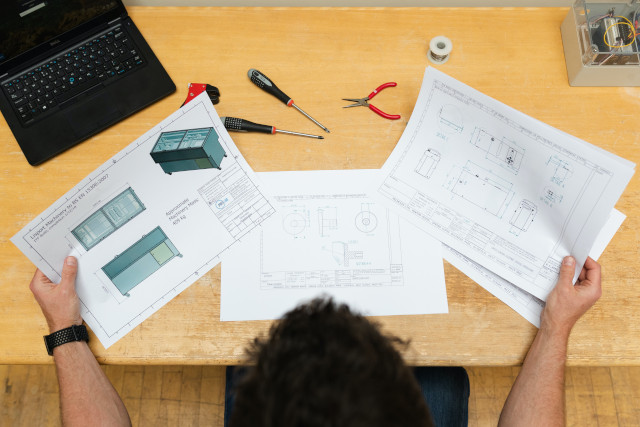Design patterns are reusable solutions to common problems that occur in software design. We'll explore some popular ones in this post.
Design patterns represent best practices and can be used to improve the structure and efficiency of your code. Here are some commonly used design patterns in the context of web development:
Model-View-Controller (MVC): This is a design pattern often used in web development frameworks. It separates the application into three interconnected components: the Model (data), the View (user interface), and the Controller (processes that handle input). The MVC pattern helps in maintaining the separation of concerns and allows different aspects of an application to be developed and tested independently.
Observer/Pub-Sub: This pattern is often used to create event-driven applications. It involves objects (known as "subjects") maintaining a list of dependents (known as "observers") and notifying them automatically of any state changes. In the Publish-Subscribe variation, messages are published to "channels", and any subscribers listening to those channels receive the messages.
Singleton: This pattern restricts a class from instantiating multiple objects and ensures that only one instance of the class exists in the application. This is especially useful when a single object is required to control actions.
Factory: In this pattern, a method returns different types of objects based on the input it receives. It’s often used when you want to create different types of objects with a common interface or when you want to encapsulate object creation for a complex object.
Decorator: This pattern allows behavior to be added to an individual object, either statically or dynamically, without affecting the behavior of other objects from the same class. It is a structural pattern that involves a set of decorator classes that are used to wrap concrete components. Decorator classes mirror the type of the components they decorate.
Adapter: This pattern allows classes with incompatible interfaces to work together by wrapping its own interface around that of an already existing class. This allows the application to continue functioning even if it receives data in a different format or from different interfaces.
Facade: This pattern provides a simplified interface to a larger body of code. It hides the complexities of a system and provides a simple interface to the client from where the client can access the system.
Composite: This pattern is used to treat a group of objects in a similar way as a single object. It composes objects in term of a tree structure to represent part-whole hierarchies.
These patterns provide solutions to specific problems by defining a system of relationships between different elements in a software system. By understanding and using these patterns where applicable, developers can write more efficient, scalable, and maintainable code.
Laravel, a popular PHP framework for web application development, uses several design patterns that contribute to its flexibility, maintainability, and overall robustness. These include:
Model-View-Controller (MVC): Like many web frameworks, Laravel uses the MVC pattern, which is essential for structuring the application and maintaining separation of concerns. Models handle the data and business logic, views define how the data is presented and the user interface, and controllers handle user requests and tie the models and views together.
Factory Pattern: Laravel utilizes the Factory pattern in its service container for managing class dependencies and performing dependency injection. This allows for the flexible creation of objects, where the exact type of the object may be determined at runtime.
Strategy Pattern: Laravel uses the Strategy pattern in its various manager classes. For example, the CacheManager allows developers to switch between different caching strategies (like file, database, APC, Memcached, and Redis) seamlessly.
Repository Pattern: While not enforced by Laravel, it easily allows for the implementation of the Repository pattern. This pattern abstracts the data storage layer, providing an interface for the application to interact with the data without concerning itself with how the data is stored or retrieved. This provides a lot of flexibility in terms of data storage and makes the application more testable.
Dependency Injection (DI): Although not a design pattern itself, DI is a coding technique heavily utilized in Laravel. Laravel's service container is a powerful tool for managing class dependencies and performing dependency injection. Dependency injection is a procedure where one object supplies the dependencies of another object. This results in more flexible, modular code.
Facade Pattern: Laravel makes extensive use of the Facade pattern. Facades provide a "static" interface to classes that are available in the application's service container. They provide a terse, memorable syntax that allows Laravel's features to be used in a convenient, easy-to-read manner.
Builder (Manager) Pattern: Laravel uses this pattern in its database query builder and Eloquent ORM. This allows complex queries and operations to be built up programmatically, providing a flexible API for constructing queries.
Provider Pattern: Laravel uses Service Providers, which are the central place to configure your application. This allows bootstrapping (configuring) components like database, queue, validation, routing and more.
These patterns contribute to Laravel's philosophy of providing a framework that is both powerful, flexible, and accessible to developers.







